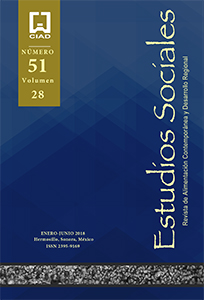Modelo de toma de decisiones para la construcción sustentable de obra pública
Decision making model for the sustainable construction of public works
Abstract
Objective: Develop a model of the decision making process for the sustainable construction of public works. Methodology. Methodology: Procedure consisted in the application of interviews to decision makers, selected through a sample of experts. Next, the variables or codes were identified, which were incorporated into a qualitative data analysis system to obtain the weights of the variables in order to develop a sustainable decision model and generate scenarios with different alternatives. Results: The decision-making model obtained was integrated from the transformation of the qualitative data coded through a scale to establish the corresponding quantitative values. The general matrix of vectors was obtained, from which the alternative is selected according to the criteria of sustainability and decision making with sustainable rationality. Limitations: During the investigation, logistical difficulties arose in the choice of decision makers that led to the modification of the sample. Conclusions: The conclusions of the research is that, with the application of the model of sustainable rationality of the decision-making process for the construction of public works, it will be feasible to change the limited rationality or rational expectations by selecting an alternative from several, to a sustainable rationality that allow to support in the definition of public policies.Keywords:
Regional development, the process of decision-making and sustainable rational downsizing, expectations, limited rationality, rational choice, dimensions of sustainabilityAbstract
Objective: Develop a model of the decision making process for the sustainable construction of public works. Methodology. Methodology: Procedure consisted in the application of interviews to decision makers, selected through a sample of experts. Next, the variables or codes were identified, which were incorporated into a qualitative data analysis system to obtain the weights of the variables in order to develop a sustainable decision model and generate scenarios with different alternatives. Results: The decision-making model obtained was integrated from the transformation of the qualitative data coded through a scale to establish the corresponding quantitative values. The general matrix of vectors was obtained, from which the alternative is selected according to the criteria of sustainability and decision making with sustainable rationality. Limitations: During the investigation, logistical difficulties arose in the choice of decision makers that led to the modification of the sample. Conclusions: The conclusions of the research is that, with the application of the model of sustainable rationality of the decision-making process for the construction of public works, it will be feasible to change the limited rationality or rational expectations by selecting an alternative from several, to a sustainable rationality that allow to support in the definition of public policies.Keywords:
Regional development, the process of decision-making and sustainable rational downsizing, expectations, limited rationality, rational choice, dimensions of sustainabilityDownloads
Published
How to Cite
Issue
Section
Para que sean publicados artículos, ensayos y reseñas críticas en Estudios Sociales, la revista debe contar con la aceptación de parte de los autores/autoras de las condiciones siguientes:
1. Los autores conservan los derechos de autor y ceden a la revista el derecho de la primera publicación del trabajo registrado bajo la licencia de Creative Commons Reconocimiento-NoComercial (CC-By-NC) que permite a terceros utilizar lo publicado, siempre y cuando mencionen la autoría del trabajo y a la primera publicación en esta revista.
2. Los autores pueden realizar otros acuerdos contractuales independientes y adicionales para la distribución no exclusiva de la versión del artículo publicado en esta revista (por ejemplo: incluirlo en un repositorio institucional o publicarlo en un libro) siempre y cuando indiquen, claramente, que el trabajo se publicó por primera vez en esta revista.




















